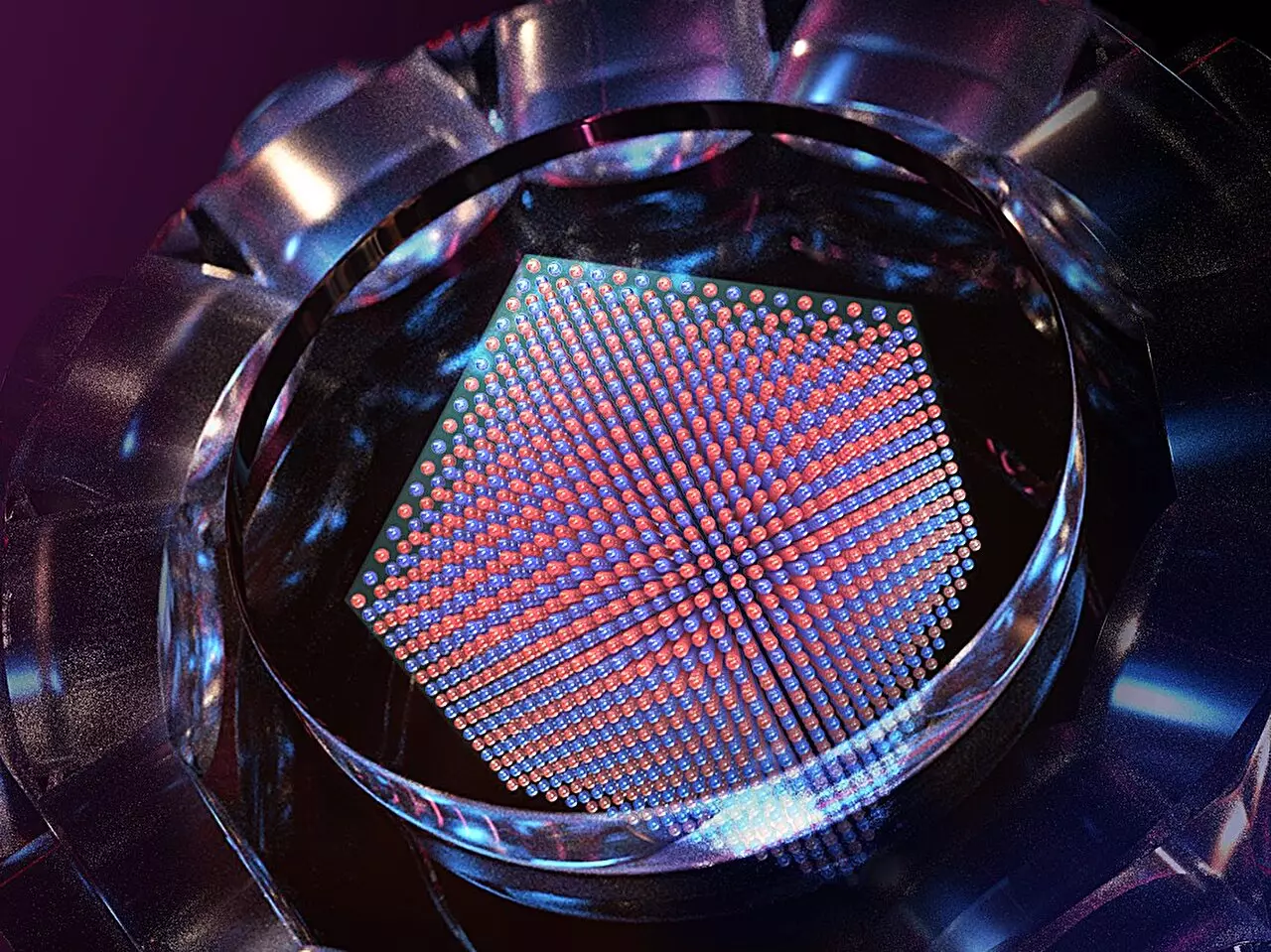In the realm of quantum physics, significant milestones often arise from the confluence of innovative thinking and sophisticated technologies. A monumental stride was made recently, as a research collaboration spearheaded by esteemed scientists at the University of Science and Technology of China unveiled their landmark study on the antiferromagnetic phase transition. Using a large-scale quantum simulator, they successfully navigated the complex terrain of the fermionic Hubbard model (FHM), marking the first comprehensive observation of its antiferromagnetic characteristics. This achievement not only highlights the transformative potential of quantum simulation but also opens doors to unraveling the puzzling aspects of high-temperature superconductivity.
The study, published in the prestigious journal Nature, represents a critically important step in mapping out the elusive phase diagram of the FHM. High-temperature superconductors have captivated scientists for decades, primarily due to their interplay between quantum magnetism and superconductivity. Yet, the physical mechanisms governing these phenomena have largely remained enigmatic. The research conducted by this team provides an experimental foundation that could fill the existing gaps in our theoretical understanding, subsequently paving the way for practical applications in advanced materials.
The Challenges of Studying Quantum Materials
Despite the excitement surrounding superconductivity and strongly correlated quantum materials, researchers face considerable hurdles. The fermionic Hubbard model, while a simplified representation of electron dynamics, remains complex due to the lack of exact analytical solutions in both two and three dimensions. Thus far, even the cutting-edge numerical techniques employed have struggled to unveil the full parameter space necessary for deep insights into these systems. In fact, theoretical perspectives suggest that even a perfect digital quantum computer may falter when tasked with resolving such intricate models.
The beauty—and challenge—of quantum simulation lies in its ability to harness ultracold fermionic atoms within optical lattices. This cutting-edge method is touted as a potential game changer for outlining the low-temperature phase diagram of the FHM. Successfully realizing the antiferromagnetic phase transition and achieving the ground state at half-filling level are foundational targets. A triumph in these areas would confirm two essential capabilities of the employed quantum simulator: the establishment of a spatially homogeneous optical lattice with uniform Hubbard parameters and the capability to maintain system temperatures well below the Nél temperature.
Innovative Solutions to Historical Challenges
Historically, attempts to achieve the antiferromagnetic phase transition in quantum simulations were stymied by challenges related to cooling fermionic atoms and lattice uniformity. Standard Gaussian-profile lattice lasers introduced inhomogeneities that complicated the experimental landscape. To address these limitations, the research team leveraged their prior accomplishments in manipulating strongly interacting Fermi gases contained within a box potential. They developed an advanced quantum simulator that seamlessly combined low-temperature homogeneous Fermi gas generation with a flat-top optical lattice featuring uniform site potentials.
This new quantum simulator boasts an impressive capacity, accommodating approximately 800,000 lattice sites—roughly four orders of magnitude greater than existing experimental facilities, which typically manage only a few dozen. With uniform Hamiltonian parameters and temperatures maintained significantly below the Nél temperature, the simulator allowed the researchers to meticulously fine-tune interaction strength, temperature, and doping concentrations to affirmatively approach critical values.
Utilizing this sophisticated arrangement, the team successfully detected direct evidence of the antiferromagnetic phase transition. They observed the power-law divergence of spin structure factors, acquiring a critical exponent of 1.396 that aligns with Heisenberg universality. This breakthrough not only elevates our comprehension of quantum magnetism but also lays a robust foundation for future endeavors aimed at fully decoding the FHM.
The Future of Quantum Physics and Superconductivity
As the findings of this research deviate from the expected half-filling scenario, they not only underscore the power of quantum simulation but also highlight its ability to surpass classical computational capabilities in addressing essential scientific questions. As scientists dive deeper into these quantum mysteries, the path toward understanding high-temperature superconductivity appears increasingly illuminated.
In essence, the work conducted by this pioneering team stands as a testament to the untapped potential of quantum technologies. Their demonstration of the antiferromagnetic phase transition may very well herald a new epoch in materials science, breaking barriers and unlocking future innovations that can transform both technology and industry. This journey into the quantum unknown is more than an academic exploration; it represents the hope for practical realizations that could reshape the future of energy, electronics, and beyond.


Leave a Reply